The beginning of Pilies Street
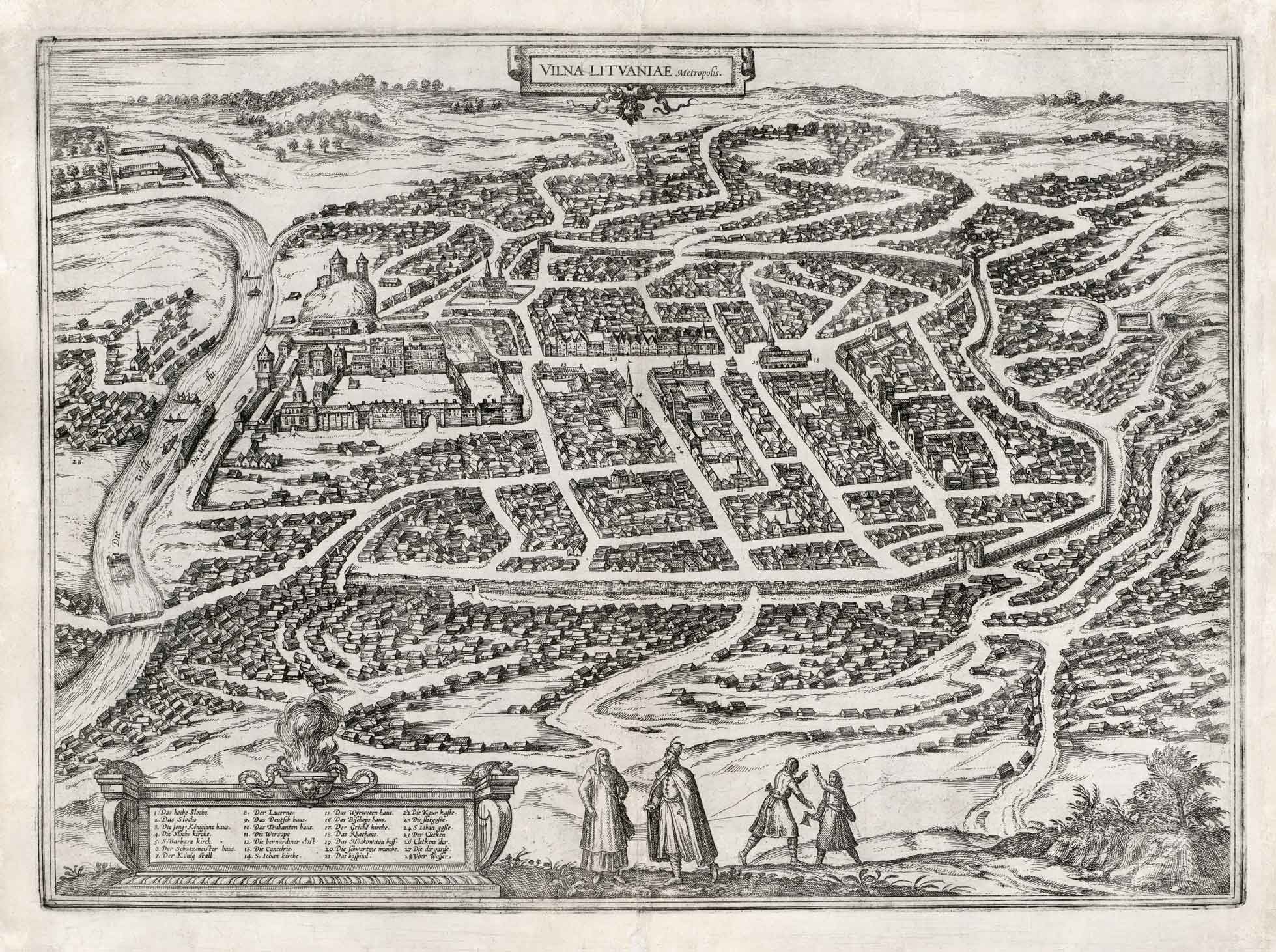
Georg Braun (1541–1622), Frans Hogenberg (1535–1590)
Vilna Litvaniae Metropolis. 1581
Paper, copper engraving
Lithuanian Art Museum
The Vilnius Lower Castle territory was connected to the rest of the city that lay beyond the left channel of the Vilnia River (filled in by the order of the tsarist administration in the 19th century, present-day Šventaragio Street) by a bridge built in around 1495 near the start of Pilies Street. In 1503 Grand Duke of Lithuania Alexander allowed the Vilnius burghers to build a city defensive wall that would protect them against the invasion of the Tatar army. Until 1522 the city was surrounded by a 2.5 km long wall which had five gates, one of them was Pilies, or Castle Gate. This gate was at the beginning of Pilies Street where the city wall connected to the wall around the Lower Castle.
Castle Gate led towards the Rulers’ Way, which went along Pilies, Didžioji and Rūdninkų streets towards the representational Rūdninkų Gate. In 1610 the gate was severely damaged in a major fire that engulfed the whole city, yet they were rebuilt and enlarged. The building housed the Land and Castle courts, and a nobles’ prison. In 1785 the structure was reconstructed into the three-storey Supreme Tribunal chambers. In 1837, when the tsarist government dismantled the old city fortifications, Castle Gate was demolished. Four granite blocks mark their former site (along the edge of present-day Cathedral Square).
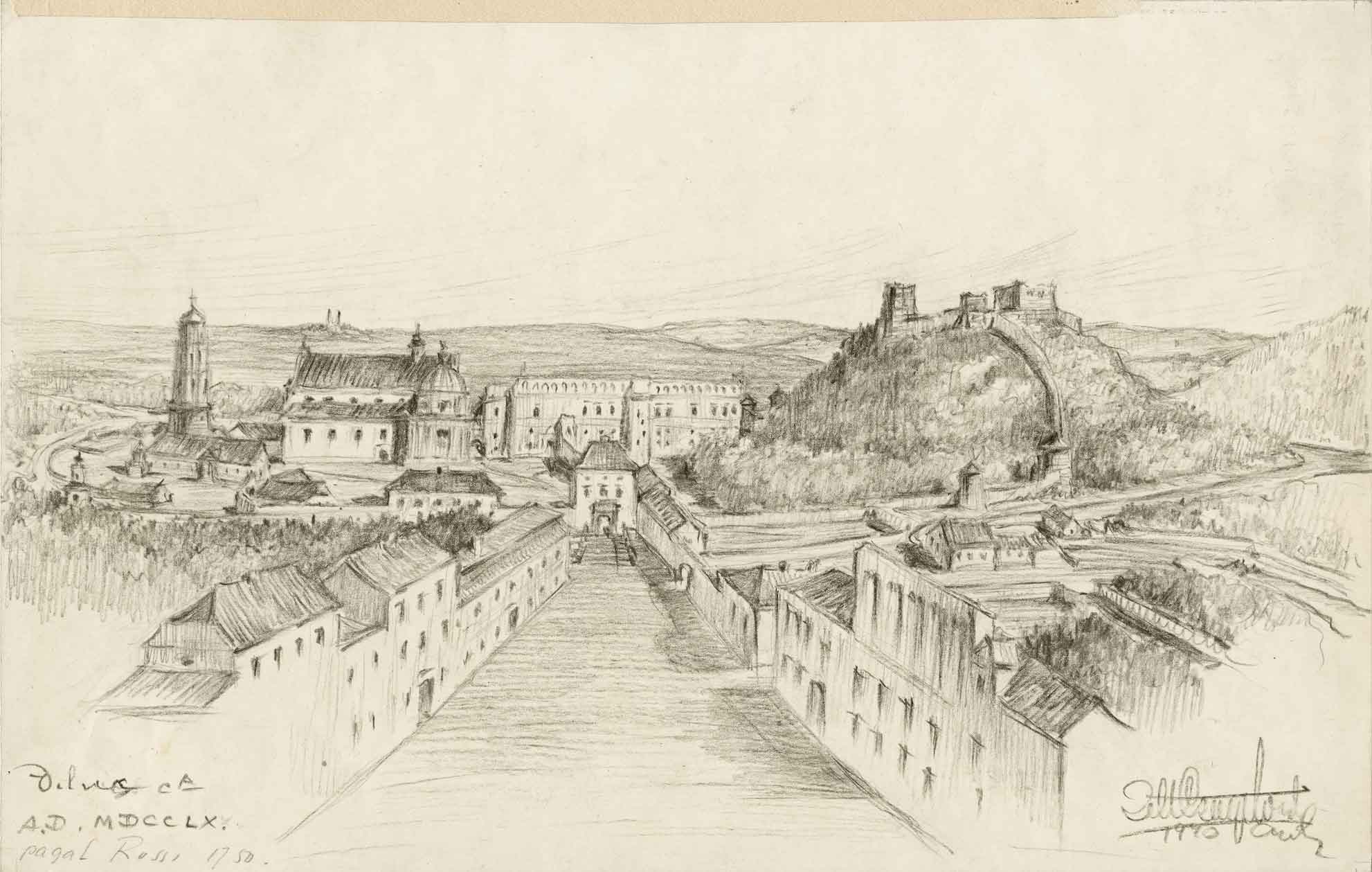
Zygmunt Mieczysław Czaykowski (1887–1950)
Pilies Street in Vilnius. 1940
Paper, charcoal
Lithuanian Art Museum
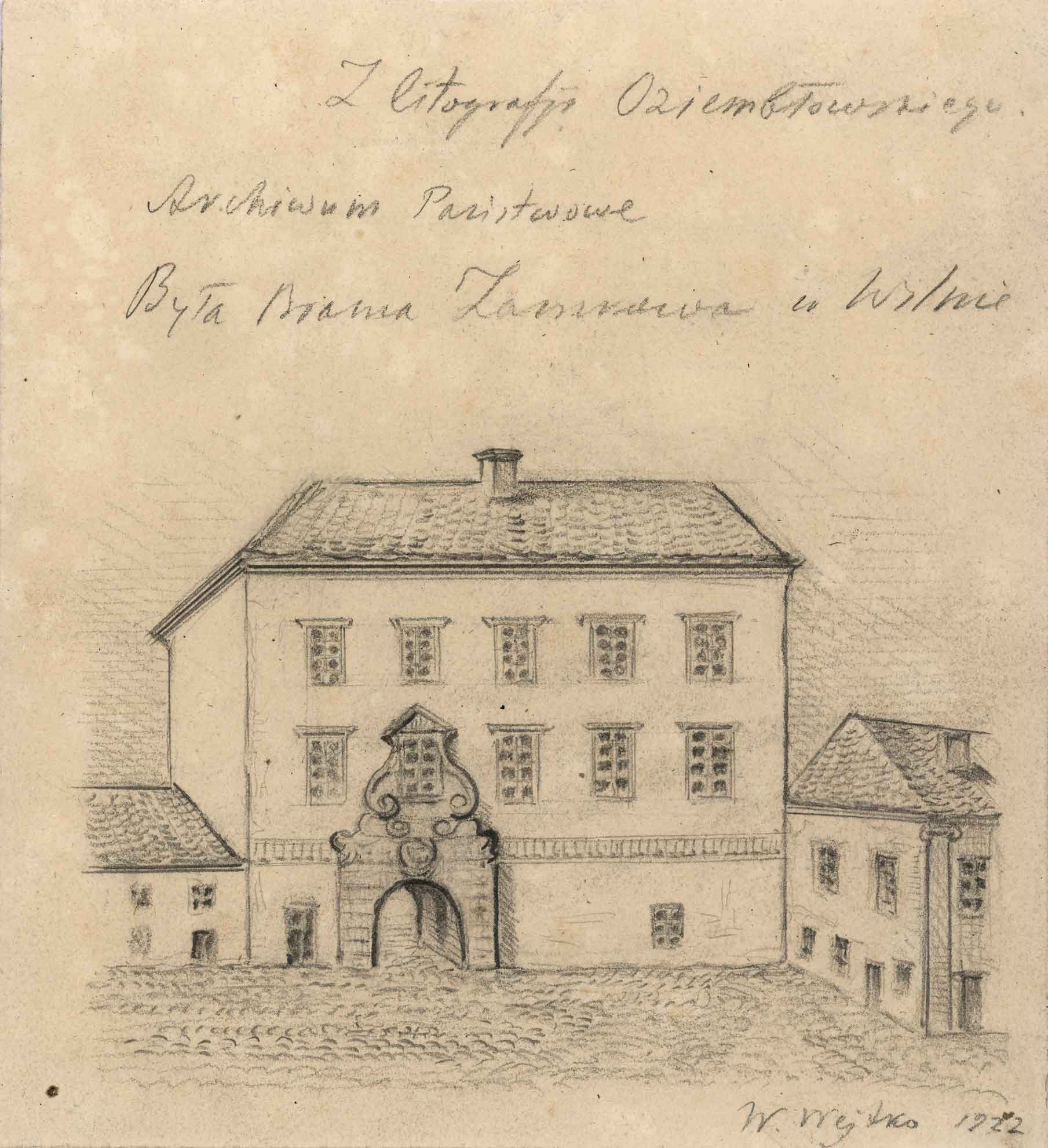
Wacław Wejtko (1861–1939)
Vilnius old castle gate. 1922
Paper, pencil
Lithuanian Art Museum
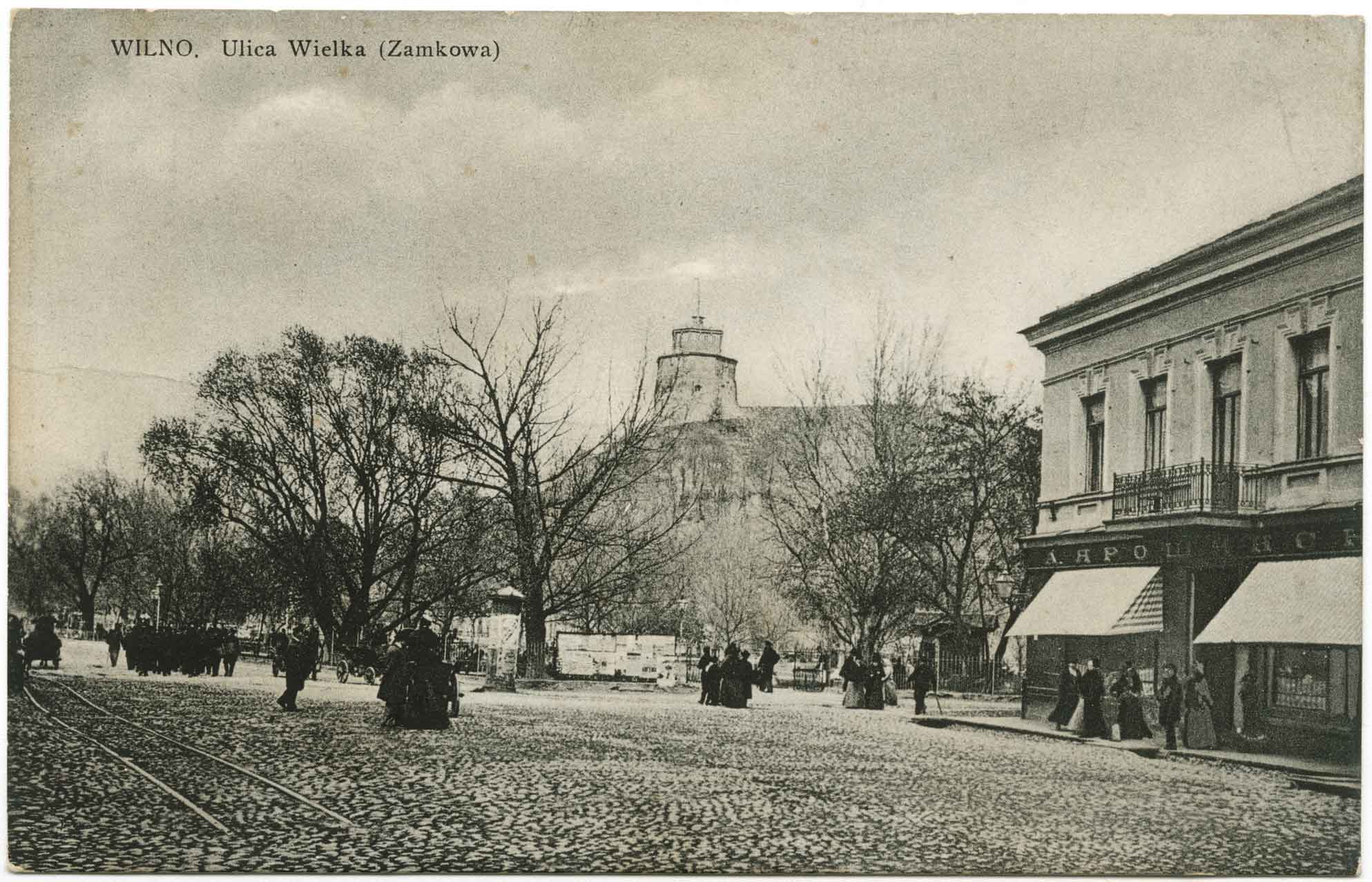
Vilnius. Didžioji (Pilies) Street [the beginning of Pilies Street].
Postcard published by David Visun, ~ 1912
Lithuanian Art Museum
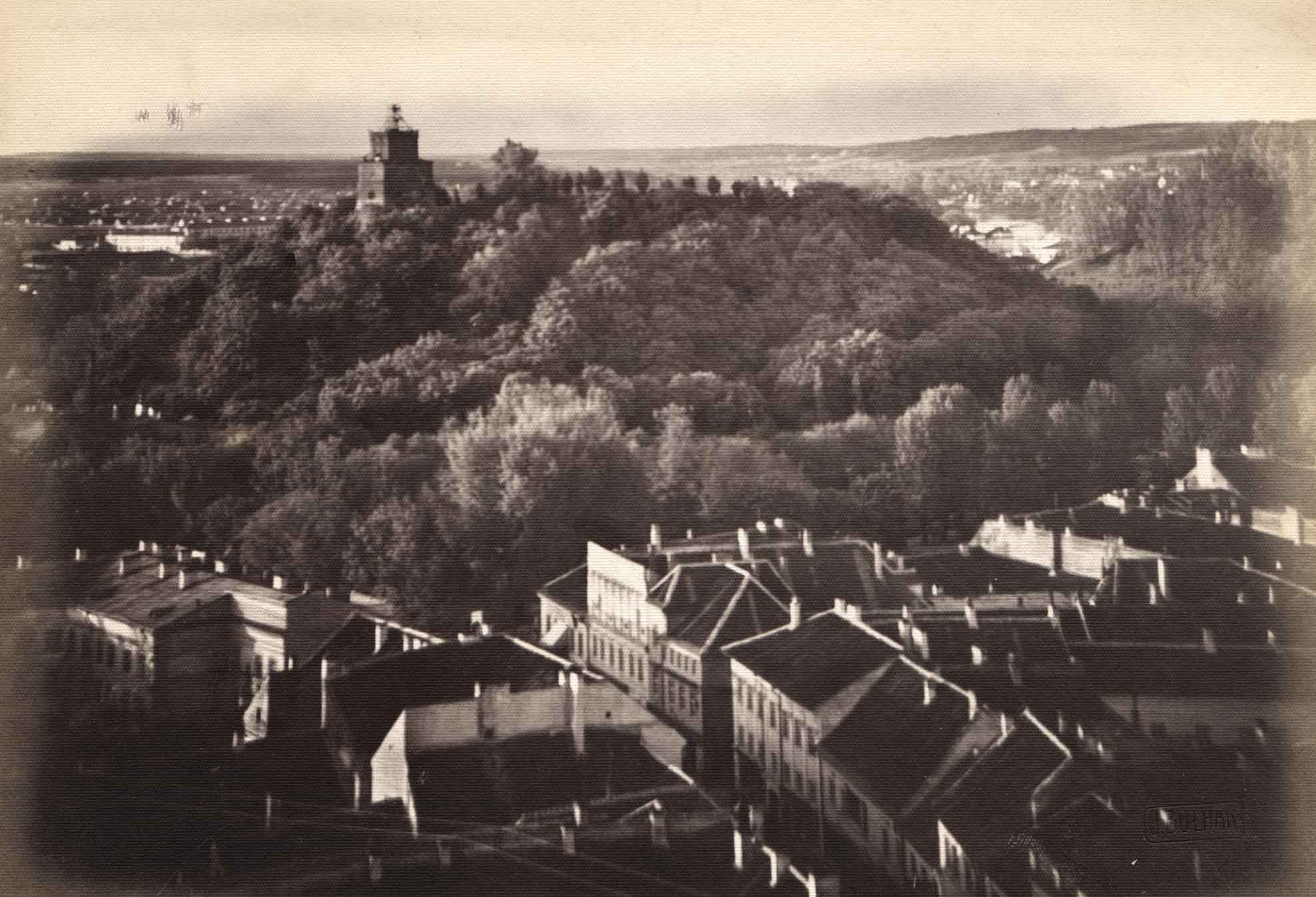
Jan Bułhak
Castle Hill and Pilies Street. 1912
Lithuanian Art Museum

